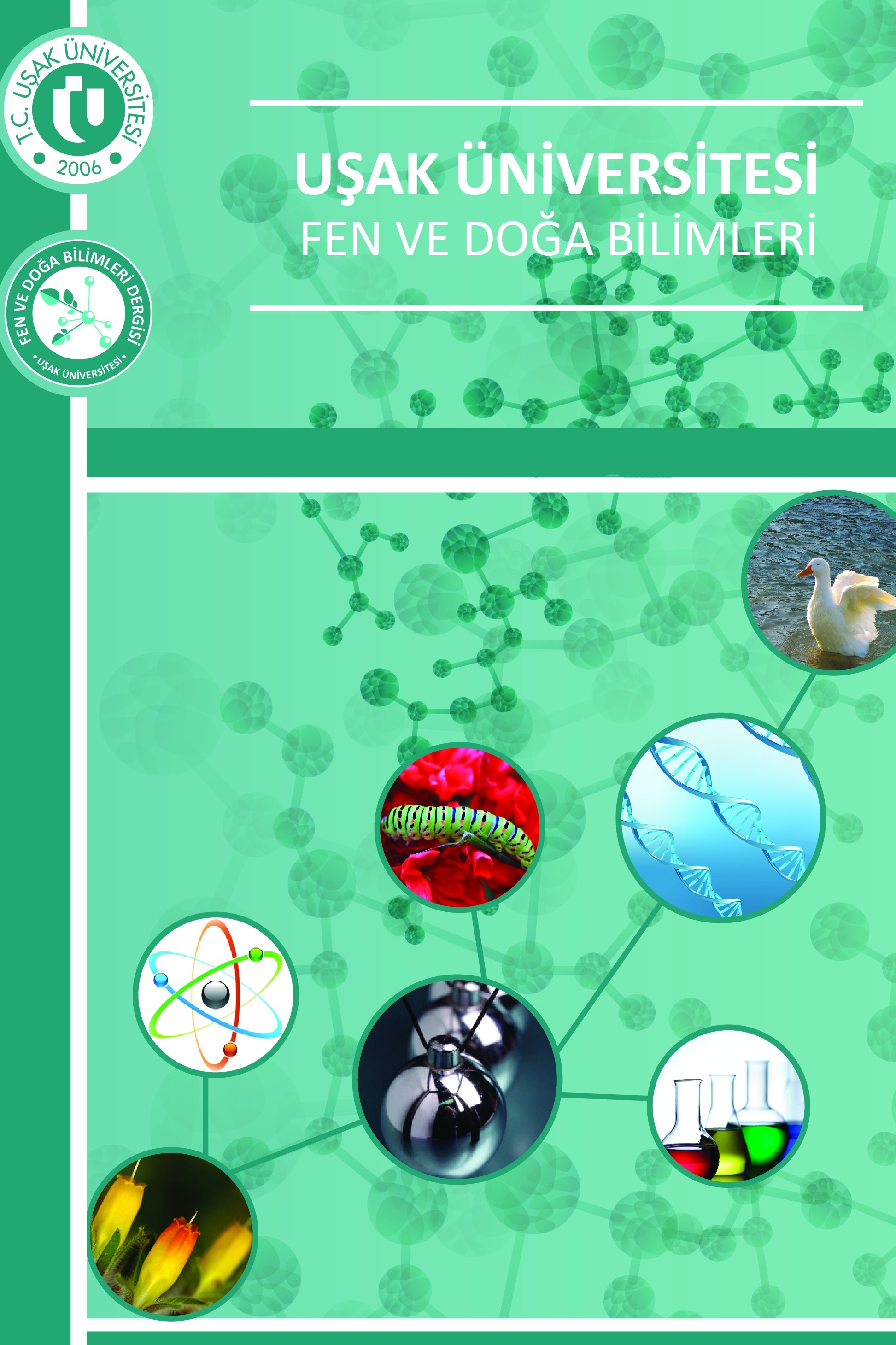Bazı Çeltik Çeşitlerinde Toksik Düzeyde Demir İçerikli Tam Besin Çözeltisi Uygulamasının Taze Yapraklarda Peroksidaz ve Katalaz Aktiviteleri Üzerine Etkisi
Bu çalışmanın amacı, bazı çeltik çeşitlerinde toksik düzeyde demir içerikli tam besin çözeltisi uygulamasının taze yapraklarda peroksidaz ve katalaz aktiviteleri üzerine etkisini belirlemektir. Kum kültüründe yetiştirilen çeltik çeşitlerine demir sülfat (FeSO4.7H2O) formunda; I) 0, II) 45 µM Fe (yeterli Fe), III) 3.50 mM Fe (toksik Fe), IV) 3.50 mM Fe (toksik Fe + bentonitli ortam) şeklinde olmak üzere dört farklı muamele uygulanmıştır. Toksik düzeyde demir uygulamasının peroksidaz aktivitesinde sağladığı azalmanın oranı, Biga incisi çeşidinde -% 7.18; Osmancık-97 çeşidinde -% 43.4; Hamzadere çeşidinde -% 4.16; Ronaldo çeşidinde -% 33.6; Edirne çeşidinde -% 16.02 olarak hesaplanmıştır. Bu sonuçlara göre Osmancık çeltik çeşidinde toksik düzeyde demir içeren besin çözeltisi uygulaması taze yaprakta peroksidaz enzim aktivitesini diğer çeşitlere göre daha fazla azaltmıştır. Peroksidaz enzim aktivitesi en yüksek çeşitlerin Hamzadere ve Edirne çeltik çeşitleri oldukları; buna karşın, en düşük çeşidin ise Osmancık-97 ve Ronaldo çeşitleri olduğu tespit edilmiştir. Fe dozunun taze yaprakta katalaz aktivitesine etkisi istatistiksel olarak önemsiz bulunmuştur. Toksik demir düzeyinde (3.50 mM Fe) yetiştirilen çeşitler arasında taze yaprakta katalaz enzim aktivite değeri en yüksek çeşidin Hamzadere çeşidi olduğu; buna karşın, en düşük çeşidin ise Edirne çeltik çeşidi olduğu görülmektedir.
Anahtar Kelimeler:
Çeltik çeşidi, Demir toksisitesi, Peroksidaz, Katalaz
The Effect of Toxic Level Iron Containing Complete Nutrient Solution Application on Peroxidase and Catalase Activities in Fresh Leaves in Some Rice Varieties
The aim of this study is to determine the effect of toxic level iron containing complete nutrient solution application on peroxidase and catalase activities in fresh leaves in some rice varieties. Iron in the form of iron sulphate is added to rice varieties grown in sand culture; Four different treatments were applied: I) 0, II) 45 µM Fe (sufficient Fe), III) 3.50 mM Fe (toxic Fe), IV) 3.50 mM Fe (toxic Fe + sand media with bentonite) as four different treatments. The rate of decrease in peroxidase activity of iron application at toxic level was calculated as-7.18 %, - 43.4 % and - 4.16 %, respectively, in Biga incisi, Osmancık-97 and Hamzadere rice varieties. Also, it was calculated as 33.6 % and 16.02 %, respectively in Ronaldo and Edirne rice varieties. According to these results, application of a nutrient solution containing toxic iron in Osmancık rice variety decreased the peroxidase enzyme activity in fresh leaves more than other varieties. While Hamzadere and Edirne rice varieties are found to be the highest peroxidase enzyme activity, Osmancık-97 and Ronaldo rice varieties have the lowest activity. The effect of Fe dose on catalase activity in fresh leaves was found to be statistically insignificant. Among the varieties grown at toxic iron level (3.50 mM Fe), the variety with the highest catalase enzyme activity value in fresh leaves is the Hamzadere variety, whereas the lowest variety is seen to be Edirne rice variety.
Keywords:
Rİce variety, Iron toxicity, Peroxidase, Catalase,
___
- Koç E, Üstün AS, Arıcı YK. Biber (Capsicum annuum L.) fidelerinde farklı çinko konsantrasyonlarının total protein, hidrojen peroksit içeriği ve peroksidaz aktivitesi üzerine etkisi. Artvin Çoruh Üniversitesi Orman Fakültesi Dergisi, 2012;13(2):205-212.
- Gill SS, Tuteja N. Reactive oxygen species and antioxidant machinery in abiotic stress tolerance in crop plants. Plant Physiology and Biochemistry, 2010;48: 909-930.
- Burzynski M, Klobus G. Changes of photosynthetic parameters in cucumber leaves under Cu, Cd and Pb stress. Photosynthesis Research, 2004;42(4):505-510.
- He CY, Hsiang T, Wolyn DJ. Induction of systemic disease resistance and pathogen defence responses in Asparagus officinalis inoculated with nonpathogenic strains of Fusarium oxysporum. Journal of Plant Pathology, 2002;51:225- 230.
- Becana M, Moran JF. Iturbe-Ormaetxe I, Escuredo PR. Iron-dependent oxygen free radical generation in plants subjected to environmental stress: toxicity and antioxidant protection. Plant and Soil, 1998;201(1):137-147. doi: 10.1023/A:1004375732137
- Tiryakioglu M, Eker S, Özkutlu F, Husted S, Çakmak I. Antioxidant defense system and cadmium uptake in barley genotypes differing in cadmium tolerance. Journal of Trace Elements in Medicine and Biology, 2006;20:181-189. doi:10.1016/j.jtemb.2005.12.004
- Ak A, Yücel E. Ecotoxicological effects of heavy metal stress on antioxidant enzyme levels of Triticum aestivum cv. Alpu. Biological Diversity and Conservation, 2011;4/3:19-24.
- Zhang X, Zhang F, Mao D. Effect of Fe plaque outside roots on nutrient uptake by rice (Oryza sativa L.): zinc uptake. Plant and Soil, 1998;202:33-39.
- Dhindsa RS, Plumb-Dhindsa P, Throne TA. Leaf senescence correlated within creased levels of membrane permeability and lipid peroxidation and decreased levels of superoxide dismutase and catalase. Journal of Experimental Botany, 1981b:32:93-101.
- Wakamatsu K, Takahama U. Changes in peroxidase activity and in peroxidase isozymes in carrot Callus. Physiologia Plantarum, 1993;88:167-171.
- Akınoğlu G. Çeltik bitkisinde demir toksisitesi, Birinci Basım, ISBN:978-625-7702-45-4, Ankara, Türkiye: Gece Kitaplığı; 2020. p. 148.
- Korkmaz A, Akınoğlu G. Bitki beslemede toprak-kök etkileşimi, Birinci Basım, ISBN:978-625-7342-90-2, Ankara, Türkiye: Gece Kitaplığı, 2021. p. 400.
- Nawar WW. Lipids in “food chemistry”, O.R. Fennema (Ed). 3th Edition, New York: Marcel Dekker. 1996. p. 225-319.
- Diplock A. Healty lifestyles nutrition and physical activity, Antioxidant nutrients, ILSI Europe Concise Monograph Series, 59. 1998.
- Romero-Puertas MC, Corpas FJ, Rodriguez-Serrano M, Gomez M, del Río LA, Sandalio LM. Differential expression and regulation of antioxidative enzymes by Cd in pea plants. Journal of Plant Physiology, 2007;164:1346-1357.
- Ranieri A, Castagna A, Baldan B, Soldatini GF. Iron deficiency differently affects peroxidase isoforms in sunflower. Journal of Experimental Botany, 2001;52(354):25-35.
- Büyük İ, Soydam-Aydın S, Aras S. Bitkilerin stres koşullarına verdiği moleküler cevaplar. Türk Hijyen ve Deneysel Biyoloji Dergisi, 2012;69(2):97-110.
- Başlangıç: 2017
- Yayıncı: Uşak Üniversitesi
Sayıdaki Diğer Makaleler
Manda Sütünden Üretilen Bazı Ürünlerin Duyusal Özellikleri
Farklı Boyutlardaki Poliamid, Poliester ve Jüt Liflerinin Betonun Mekanik Davranışına Etkisi
On Combining with Fourier Transform and Adomian Methods to solve the Riccati Equations
Selenyumun Bitki Metabolizması ve Tarımsal Kullanımı
Sığır Sürülerinde Hiyerarşik Davranışların Sürü Yönetimine Etkileri
Mustafa VAROL, Sibel ALAPALA DEMİRHAN
